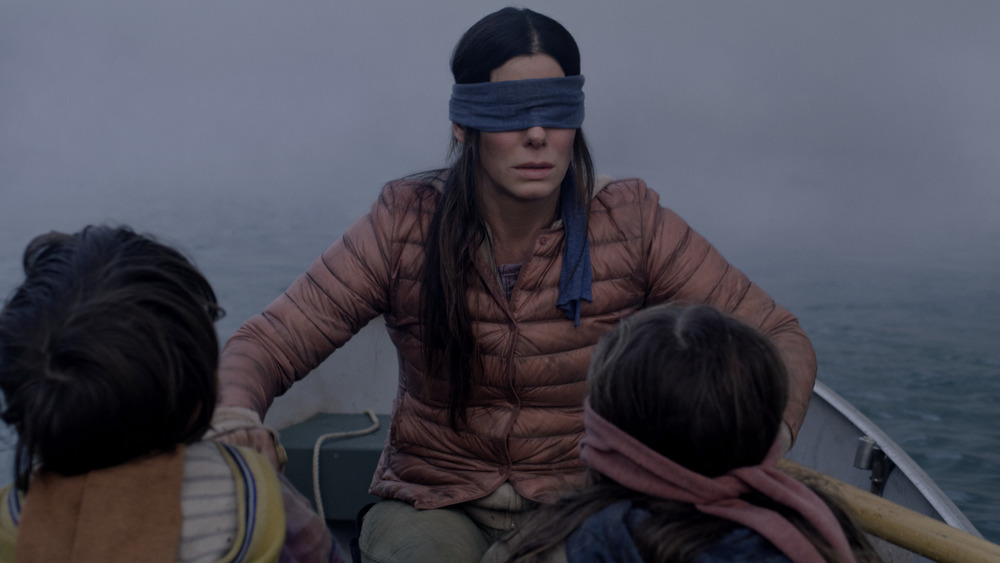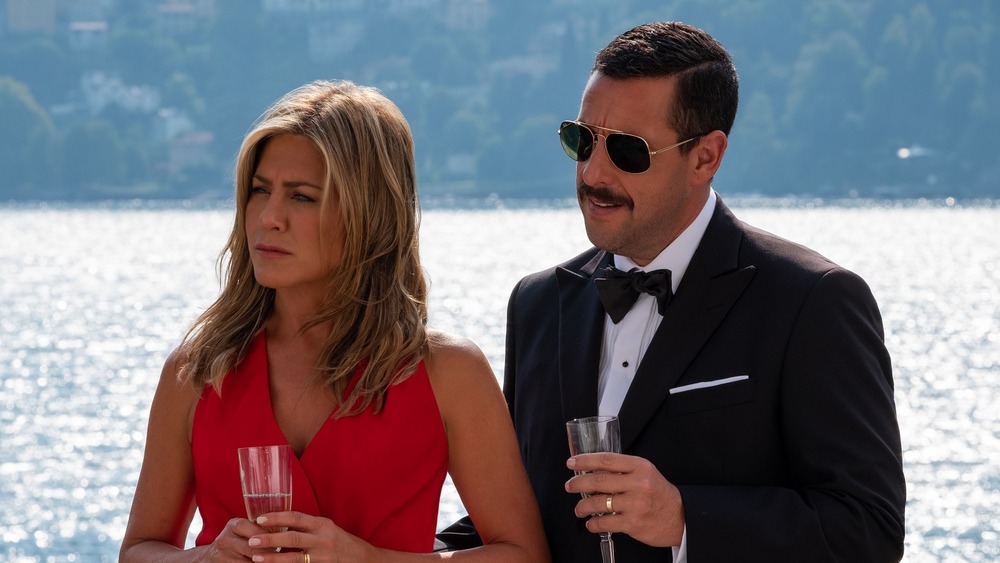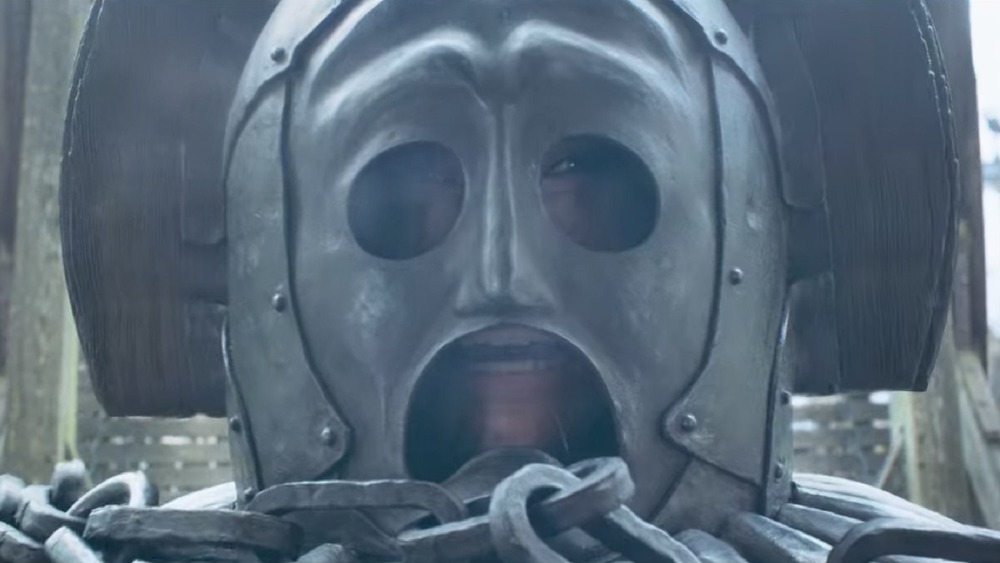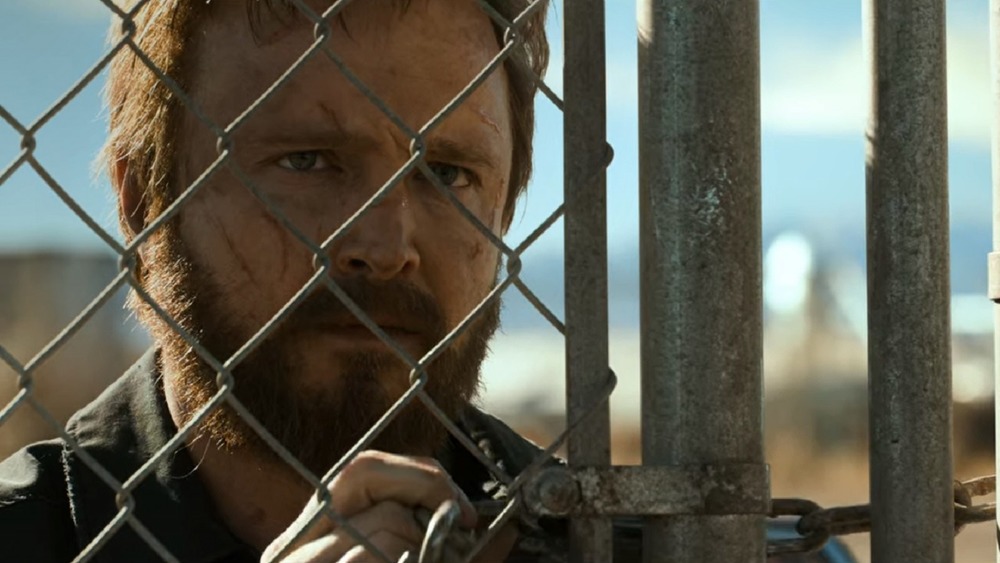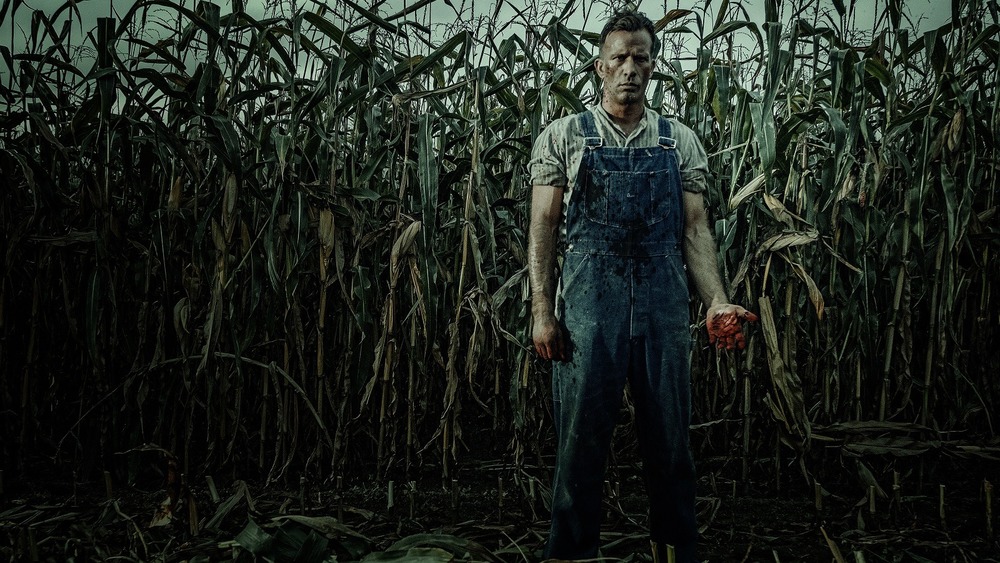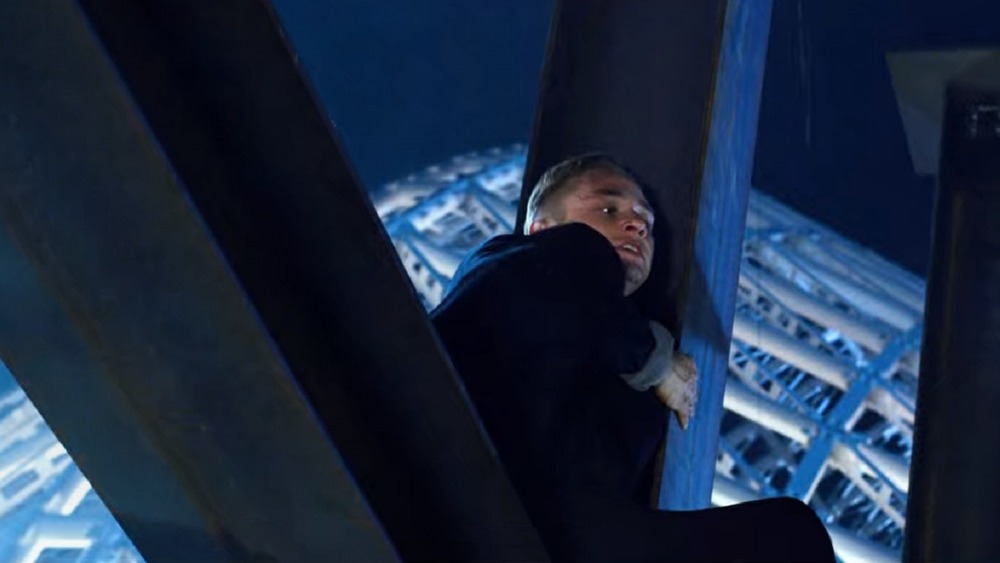Netflix Scenes You Never Knew Used Special Effects
This content was paid for by Netflix and created by Looper.
When it comes to special effects, the less you realize you're seeing them, the better. The job of a visual effects team is to create imagery that's either impractical or impossible to shoot and to do so in such a way that audiences remain engaged with the story instead of being caught up in the fabrication of the scenes.
Of course, some visual effects are bound to be more noticeable than others. Any time you see a movie scene involving outer space, pyrotechnics, high-speed chases, inhuman creatures, or superheroic feats, audiences know they probably got some major post-production support from effects artists. But not all of those computer-generated images are quite as obvious as others. Sometimes, movies bring in some VFX support for scenes that are so realistic and seamless that you might have never guessed they weren't traditional film shots. Here's a look at some of those Netflix movie scenes you never knew used special effects.
Look closely at Bird Box's river scene
You don't have to be blindfolded to overlook one of the movie magic moments in Bird Box. The 2018 dystopian thriller took the internet by storm with its disturbing vision of a world that's been decimated by mysterious monsters who attack everyone who looks upon them. Audiences will undoubtedly notice some of the striking visual effects implemented in the first act of the film, as the deadly supernatural attackers hijack the minds of their victims with explosive and deadly consequences. What you might've missed, though, is how special effects helped to make the film's instantly iconic boat scene come together.
Sandra Bullock stars in the film as Malorie, a woman who survives for several years by using a blindfold and raising her two children, Boy (Julian Edwards) and Girl (Vivien Lyra Blair), to rely on their hearing rather than their sight. After the threat of infected wanderers grows, though, Malorie decides to set out for the promise of safety with a nearby community. She knows the journey will be treacherous, as she'll not only have to travel without her sight, but she'll also have to navigate an unfamiliar river with two tender-age children in tow.
The climactic scene of her rowing with her vulnerable kids is intense, thanks in no small part to the work of the visual effects team. Though the boat scene was partially filmed in a real-life waterway, the rushing waters and choppy waves that made the journey look even more perilous were added in during the post-production process. Visual effects supervisor Marcus Taormina told Digital Media World that the team utilized drones and 3-D water simulations to make the water ride and rapids look as realistic as possible. The challenge, Taormina explained, was that "the sequence needed to express the violence of the river and the danger the family was in but still look realistic." Additionally, Taormina and his team had to make sure their effects didn't overshadow the actors themselves. Judging by the final product, along with the other important visual element additions throughout the film, it was a job well done.
Rev your engines for this Murder Mystery moment
You might not think a comedic caper about two fish out of water in Europe would need much visual overlay, but the effects team on 2019's Murder Mystery had a pretty heavy lift. The film features Adam Sandler and Jennifer Aniston as Nick and Audrey Spitz, a middle-class couple who embark on a very tightly-budgeted European vacation but find themselves suddenly swept up in the company of billionaires, including one whose murder gets pinned on them. Much of the action of the film takes place in Monaco, but production on the picture actually took place half a world away in Montreal, Quebec, which means even the most innocuous landscapes had to be added into the background through green screen technology.
One VFX-heavy scene takes place during the Grand Prix, as the character Juan Carlos Rivera (Luis Gerardo Méndez) races on the track while the Spitzes hobnob in the crowd. The drivers were filmed in front of a green screen so that the backdrop could be added in by the special effects artists at Cinesite, and they also spruced up Rivera's vehicle a bit to make it look more modern than the stunt version they used for filming. The same company was responsible for some of the other big effects shots throughout the picture, including the chase scene, and supervisor Holger Voss said that the team's job was to use "as light a touch as possible" with their effects implementation so as not to "detract from the comedy performances" of the cast.
Hit the deck for this Old Guard scene
With all of the spectacular fight sequences, massive landscapes, and supernatural elements featured throughout The Old Guard, it's probably no surprise that the film features a great deal of visual effects work. Director Gina Prince-Bythewood's high-octane epic centers on a group of semi-immortal warriors who serve as undercover super-mercenaries, stepping into the fights they deem worthy and changing the course of history. Though this team, which is led by Charlize Theron's Andy, works hard to keep themselves out of the spotlight, their identities are discovered by a pharmaceutical executive who wants to extract and sell their secret to long life. This sends them on the run from his machine gun hit squads, with battle shots that simply couldn't happen without visual effects support.
But there are also some quieter scenes in the film that got some post-production pizzazz. After the team's newest recruit Nile (KiKi Layne) reveals her dreams about a woman who is locked in an iron coffin as she drowned again and again, we learn that this is Andy's first ally Quynh (Van Veronica Ngo). Alongside Andy, Quynh was captured in the medieval era and accused of witchcraft by villagers. The two were ultimately separated, and Quynh was trapped in an Iron Maiden and dropped to the bottom of the sea, where she has remained for 500 years. Though the exterior scene of Quynh's punishment appears very natural, the waterfront was actually added in afterwards, with the actors filming with some props in front of a blue screen. Visual effects supervisor Sara Bennett told Art of VFX that some of the other "invisible" effects shots include the backdrops in the Moroccan marketplace and the spread of supplies and soldiers in the Afghanistan war zone locations.
Stay away from the compound in El Camino
Breaking Bad fans might be surprised to learn that both of the major flashback sequences in the sequel film El Camino required some visual effects overhauls. One of them is the film's return to the compound where Jesse Pinkman (Aaron Paul) has been imprisoned for so many months. Even though parts of the exterior were rebuilt to match the original look of the grounds for the film, a lot of the compound scenes were filmed before a green screen, with the landscape added in later. For example, when Jesse opens the gate for Todd (Jesse Plemons), the extensive exterior behind him appears to be natural — but it's actually just artwork, and the portions of the landscape that are visible through the windows of Jesse's new lab are also made of movie magic.
Meanwhile, the diner sequence that features his long-awaited reunion with Walter White (Bryan Cranston) also required some VFX support, as the windows were originally peering out to nothing but blue screens. Plus, even though Bryan Cranston did undergo a major makeover, getting fit with a bald-cap to become Walt one last time, writer-director Vince Gilligan revealed that the shape was off, so visual effects were later used to firm up Walt's iconic head.
Have fun on the farm in 1922
You'd be forgiven if you thought that the 2017 adaptation of Stephen King's horror novella 1922 was simply filmed on a cornfield, given how frequently this farmland is featured in the movie. But the VFX team at Siamese was actually responsible for much of the scenery. The movie features Thomas Jane as Wilfred James, a Nebraskan farmer who will do absolutely anything to keep his farm from being sold, even if it means murdering someone he is supposed to love and protect. Much of the action takes place on his homestead, and surprisingly enough, this exterior is largely filmed on a green screen.
Even the moments when Wilfred walks alongside his crops feature a massive amount of digital add-ons, which is a testament to both the imagination of the actors and the seamlessness of the artwork. Audiences may also be surprised to learn that the exterior shots of the town of Hemingford Home are also greatly enhanced by visual effects. Everything from the buildings to the cars to the people walking around in the background were added into the backdrop in post-production, proving that even the simplest vintage settings might be sprinkled with cinematic upgrades that you would never even notice.
Keep your eye on the sky during this 6 Underground stunt
When it comes to Michael Bay's movies, it's practically a given that a very busy special effects team will be a big part of the process. That is certainly the case in 6 Underground, which features plenty of explosions, major car chases, and wicked fight scenes that benefit from the beauty of computer-generated imagery. But even a movie that's so packed with CGI can still have some enhancements that might surprise you.
The film features Ryan Reynolds as a former billionaire who starts his own elite non-governmental task force of so-called "ghosts" to take down some of the world's most despicable villains. Each member of his team has their own unique talents, including Four (Ben Hardy), who uses parkour to help him make some elaborate escapes. Not only did Bay's team employ real-life parkour jumpers and pyrotechnics to create these scenes, but they also made these moments even more heart-stopping with the digital addition of severe heights and an imposing cityscape below the biggest jumps.
Unlike many other films, green and blue screens were not used to prepare for the effects in 6 Underground because, as VFX supervisor Richard R. Hoover explained to American Cinematographer Magazine, he and Bay decided to "make [the] effects feel as photographic as possible" by dedicating all of their lighting to the subjects of the shot rather than the screens behind them.
